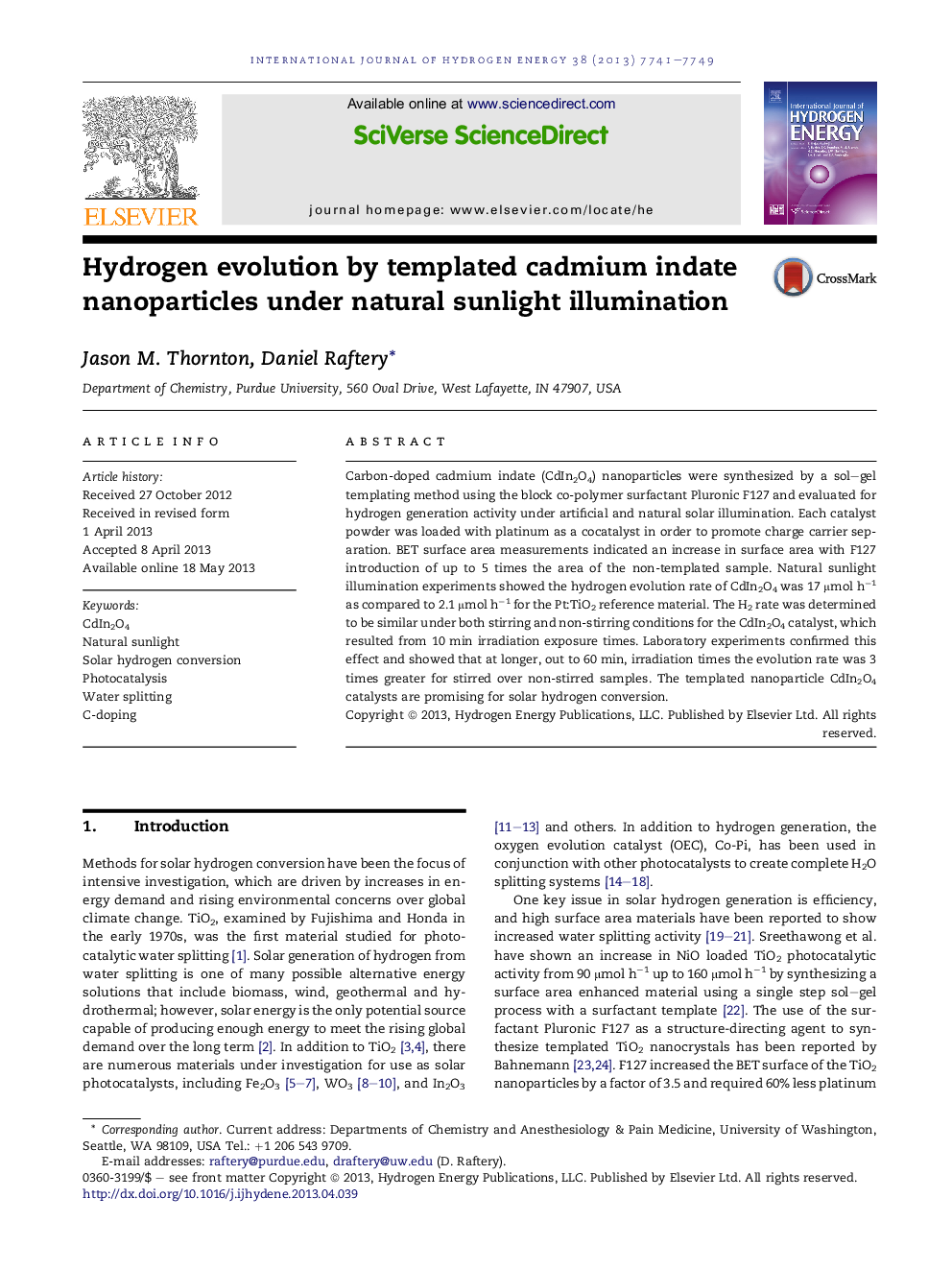| Article ID | Journal | Published Year | Pages | File Type |
|---|---|---|---|---|
| 1273629 | International Journal of Hydrogen Energy | 2013 | 9 Pages |
•High surface area C-doped CdIn2O4 synthesized using surfactant templating agent.•Pluronic F127 increases surface area 5-fold over the undoped material.•Natural sunlight illumination of F127/C-CdIn2O4 evolves H2 at a rate of 17 μmol h−1.•Increase of 8× in evolution rate over Pt–TiO2 under natural sunlight illumination.•Stirring nanoparticles results in an increase in H2 generation in the laboratory.
Carbon-doped cadmium indate (CdIn2O4) nanoparticles were synthesized by a sol–gel templating method using the block co-polymer surfactant Pluronic F127 and evaluated for hydrogen generation activity under artificial and natural solar illumination. Each catalyst powder was loaded with platinum as a cocatalyst in order to promote charge carrier separation. BET surface area measurements indicated an increase in surface area with F127 introduction of up to 5 times the area of the non-templated sample. Natural sunlight illumination experiments showed the hydrogen evolution rate of CdIn2O4 was 17 μmol h−1 as compared to 2.1 μmol h−1 for the Pt:TiO2 reference material. The H2 rate was determined to be similar under both stirring and non-stirring conditions for the CdIn2O4 catalyst, which resulted from 10 min irradiation exposure times. Laboratory experiments confirmed this effect and showed that at longer, out to 60 min, irradiation times the evolution rate was 3 times greater for stirred over non-stirred samples. The templated nanoparticle CdIn2O4 catalysts are promising for solar hydrogen conversion.
